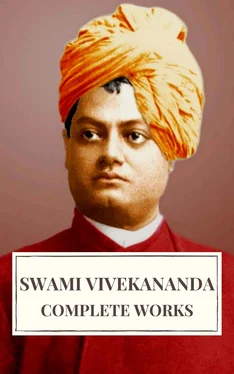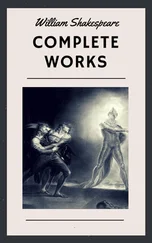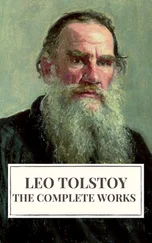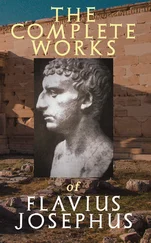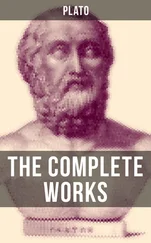Practical Vedanta: Part II
( Delivered in London, 12th November 1896 )
I will relate to you a very ancient story from the Chhândogya Upanishad, which tells how knowledge came to a boy. The form of the story is very crude, but we shall find that it contains a principle. A young boy said to his mother, “I am going to study the Vedas. Tell me the name of my father and my caste.” The mother was not a married woman, and in India the child of a woman who has not been married is considered an outcast; he is not recognised by society and is not entitled to study the Vedas. So the poor mother said, “My child, I do not know your family name; I was in service, and served in different places; I do not know who your father is, but my name is Jabâlâ and your name is Satyakâma.” The little child went to a sage and asked to be taken as a student. The sage asked him, “What is the name of your father, and what is your caste?” The boy repeated to him what he had heard from his mother. The sage at once said, “None but a Brâhmin could speak such a damaging truth about himself. You are a Brahmin and I will teach you. You have not swerved from truth.” So he kept the boy with him and educated him.
Now come some of the peculiar methods of education in ancient India. This teacher gave Satyakama four hundred lean, weak cows to take care of, and sent him to the forest. There he went and lived for some time. The teacher had told him to come back when the herd would increase to the number of one thousand. After a few years, one day Satyakama heard a big bull in the herd saying to him, “We are a thousand now; take us back to your teacher. I will teach you a little of Brahman.” “Say on, sir,” said Satyakama. Then the bull said, “The East is a part of the Lord, so is the West, so is the South, so is the North. The four cardinal points are the four parts of Brahman. Fire will also teach you something of Brahman.” Fire was a great symbol in those days, and every student had to procure fire and make offerings. So on the following day, Satyakama started for his Guru’s house, and when in the evening he had performed his oblation, and worshipped at the fire, and was sitting near it, he heard a voice come from the fire, “O Satyakama.” “Speak, Lord,” said Satyakama. (Perhaps you may remember a very similar story in the Old Testament, how Samuel heard a mysterious voice.) “O Satyakama, I am come to teach you a little of Brahman. This earth is a portion of that Brahman. The sky and the heaven are portions of It. The ocean is a part of that Brahman.” Then the fire said that a certain bird would also teach him something. Satyakama continued his journey and on the next day when he had performed his evening sacrifice a swan came to him and said, “I will teach you something about Brahman. This fire which you worship, O Satyakama, is a part of that Brahman. The sun is a part, the moon is a part, the lightning is a part of that Brahman. A bird called Madgu will tell you more about it.” The next evening that bird came, and a similar voice was heard by Satyakama, “I will tell you something about Brahman. Breath is a part of Brahman, sight is a part, hearing is a part, the mind is a part.” Then the boy arrived at his teacher’s place and presented himself before him with due reverence. No sooner had the teacher seen this disciple than he remarked: “Satyakama, thy face shines like that of a knower of Brahman! Who then has taught thee?” “Beings other than men,” replied Satyakama. “But I wish that you should teach me, sir. For I have heard from men like you that knowledge which is learnt from a Guru alone leads to the supreme good.” Then the sage taught him the same knowledge which he had received from the gods. “And nothing was left out, yea, nothing was left out.”
Now, apart from the allegories of what the bull, the fire, and the birds taught, we see the tendency of the thought and the direction in which it was going in those days. The great idea of which we here see the germ is that all these voices are inside ourselves. As we understand these truths better, we find that the voice is in our own heart, and the student understood that all the time he was hearing the truth; but his explanation was not correct. He was interpreting the voice as coming from the external world, while all the time, it was within him. The second idea that we get is that of making the knowledge of the Brahman practical. The world is always seeking the practical possibilities of religion, and we find in these stories how it was becoming more and more practical every day. The truth was shown through everything with which the students were familiar. The fire they were worshipping was Brahman, the earth was a part of Brahman, and so on.
The next story belongs to Upakosala Kâmalâyana, a disciple of this Satyakama, who went to be taught by him and dwelt with him for some time. Now Satyakama went away on a journey, and the student became very downhearted; and when the teacher’s wife came and asked him why he was not eating, the boy said, “I am too unhappy to eat.” Then a voice came from the fire he was worshipping, saying “This life is Brahman, Brahman is the ether, and Brahman is happiness. Know Brahman.” “I know, sir,” the boy replied, “that life is Brahman, but that It is ether and happiness I do not know.” Then it explained that the two words ether and happiness signified one thing in reality, viz. the sentient ether (pure intelligence) that resides in the heart. So, it taught him Brahman as life and as the ether in the heart. Then the fire taught him, “This earth, food, fire, and sun whom you worship, are forms of Brahman. The person that is seen in the sun, I am He. He who knows this and meditates on Him, all his sins vanish and he has long life and becomes happy. He who lives in the cardinal points, the moon, the stars, and the water, I am He. He who lives in this life, the ether, the heavens, and the lightning, I am He.” Here too we see the same idea of practical religion. The things which they were worshipping, such as the fire, the sun, the moon, and so forth, and the voice with which they were familiar, form the subject of the stories which explain them and give them a higher meaning. And this is the real, practical side of Vedanta. It does not destroy the world, but it explains it; it does not destroy the person, but explains him; it does not destroy the individuality, but explains it by showing the real individuality. It does not show that this world is vain and does not exist, but it says, “Understand what this world is, so that it may not hurt you.” The voice did not say to Upakosala that the fire which he was worshipping, or the sun, or the moon, or the lightning, or anything else, was all wrong, but it showed him that the same spirit which was inside the sun, and moon, and lightning, and the fire, and the earth, was in him, so that everything became transformed, as it were, in the eyes of Upakosala. The fire which was merely a material fire before, in which to make oblations, assumed a new aspect and became the Lord. The earth became transformed, life became transformed, the sun, the moon, the stars, the lightning, everything became transformed and deified. Their real nature was known. The theme of the Vedanta is to see the Lord in everything, to see things in their real nature, not as they appear to be. Then another lesson is taught in the Upanishads: “He who shines through the eyes is Brahman; He is the Beautiful One, He is the Shining One. He shines in all these worlds.” A certain peculiar light, a commentator says, which comes to the pure man, is what is meant by the light in the eyes, and it is said that when a man is pure such a light will shine in his eyes, and that light belongs really to the Soul within, which is everywhere. It is the same light which shines in the planets, in the stars, and suns.
Читать дальше
